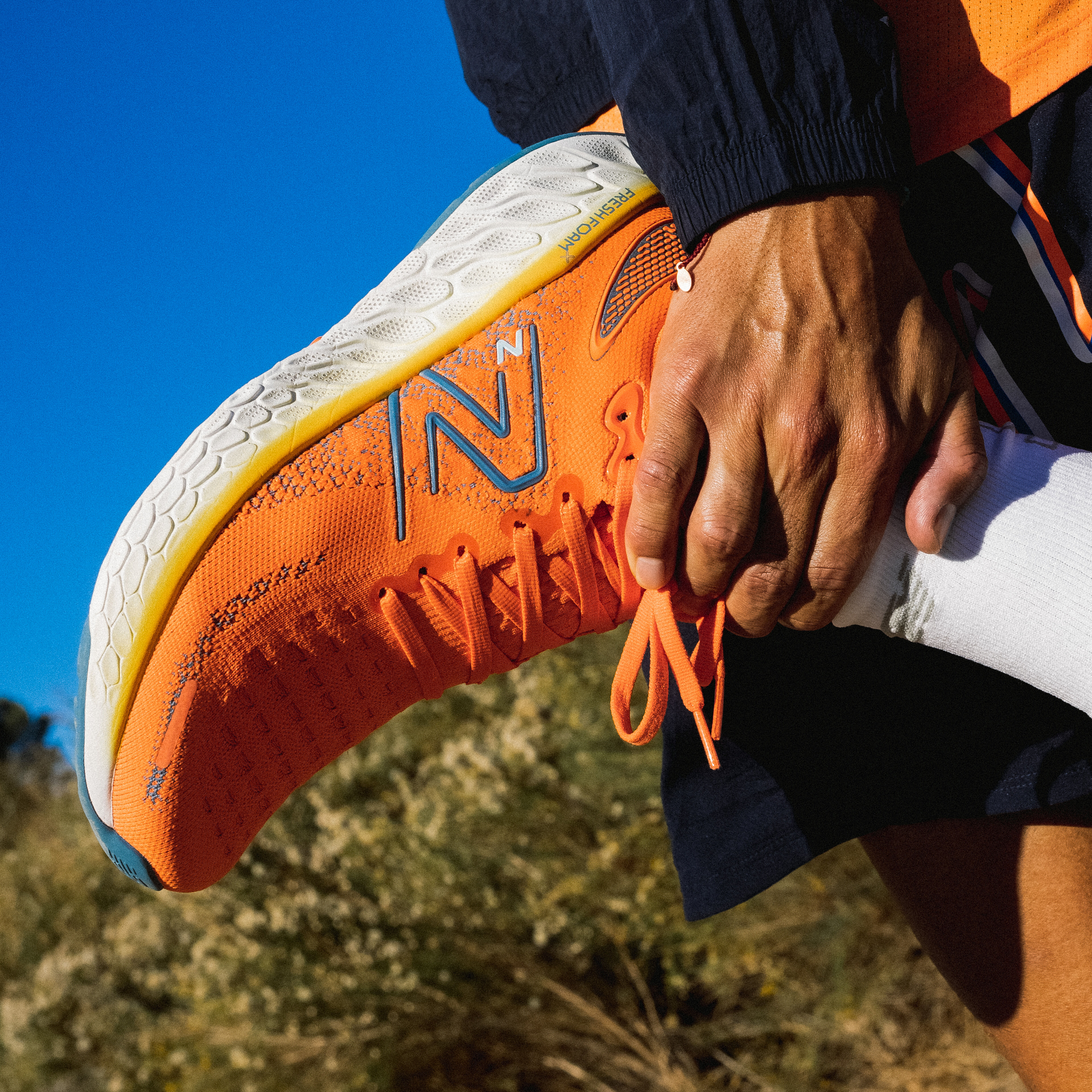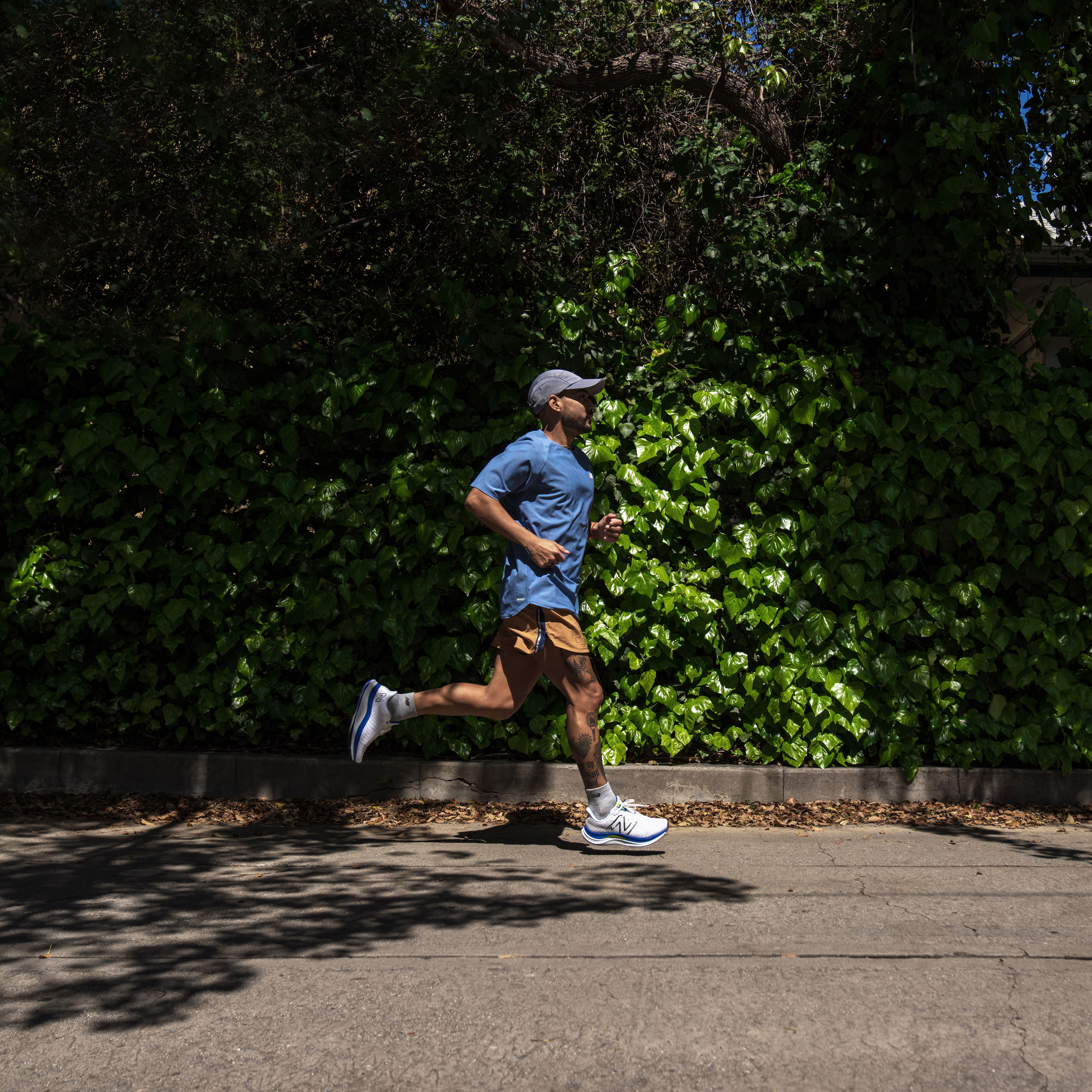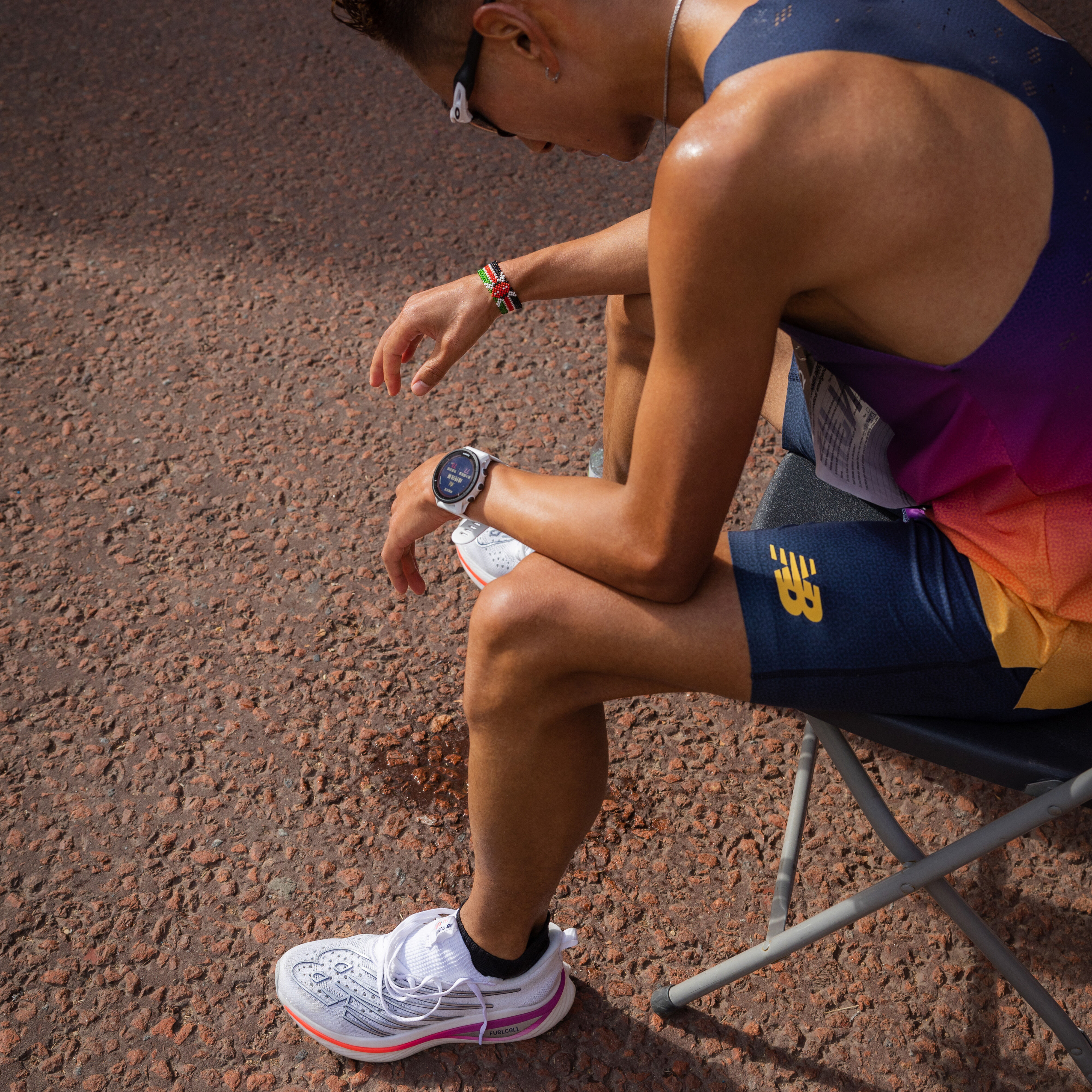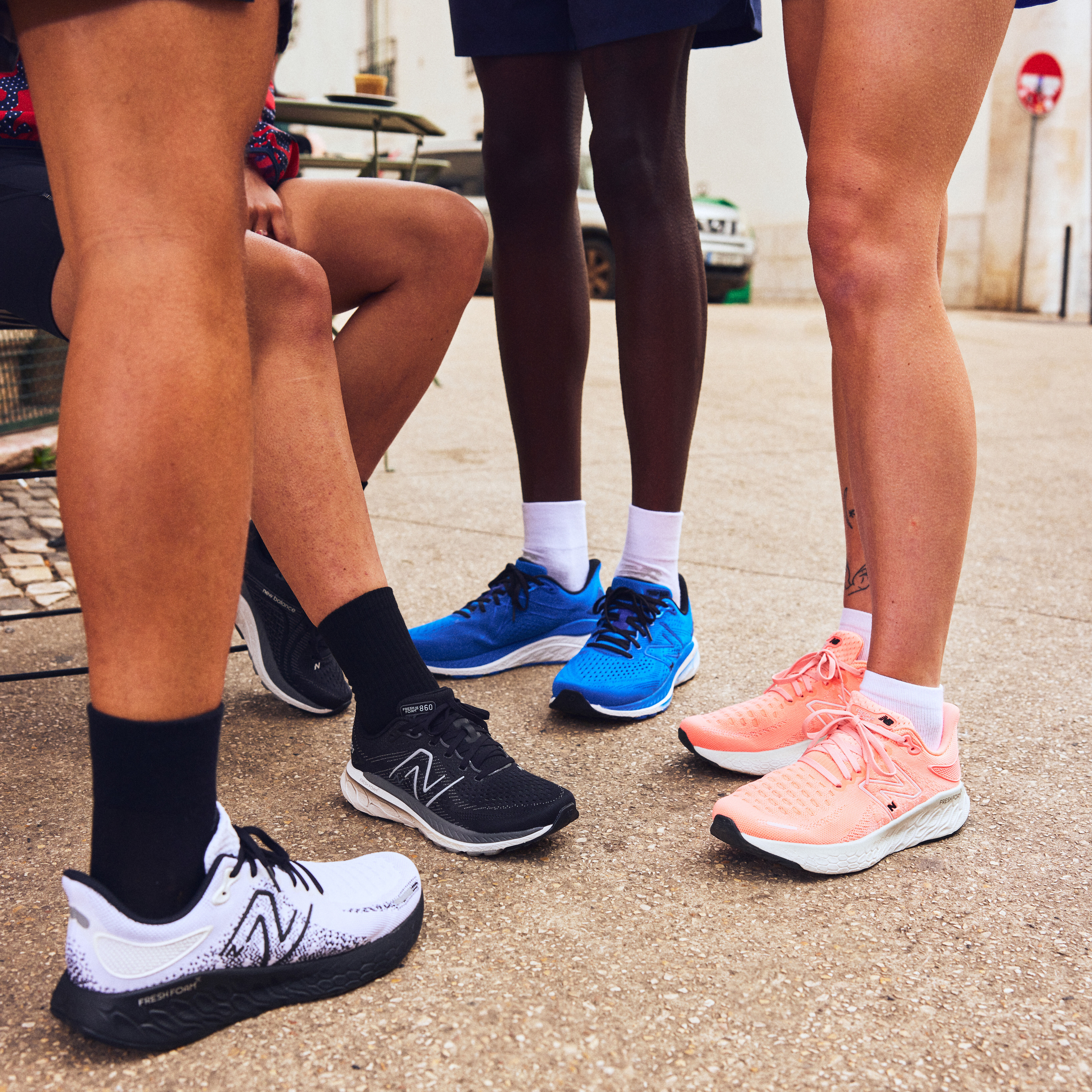
What is underpronation?
When we run, our foot rolls each time it hits the ground. It needs to do this to dissipate the impact force placed upon it. For most people, the foot rolls inwards - known as pronation - but for some, the foot rolls outwards - known as supination.
There are three types of pronation:
• Neutral - the foot rolls inwards by about 15 degrees - this is considered a ‘normal’ pronated foot.
• Underpronation - the foot rolls inwards by less than 15 degrees or rolls outwards.
• Overpronation - the foot rolls inwards by more than 15 degrees. You might have noticed there’s a slight difference between the definition of ‘supination’ (when the foot rolls outwards) and ‘underpronation’ (when the foot rolls inwards less than normal or outwards). But you’ll find that these terms are
used interchangeably, so supination trainers are the same as underpronation trainers. Historically, we’ve been told that if you’re an under or overpronator and you don’t wear corrective running shoes, you’re more likely to get injured. However, the science linking pronation to running injuries is sketchy at best. One recent study found that there’s little evidence that pronation is a risk factor. Another study found that moderate overpronators were less likely to get injured in a neutral shoe than a neutral runner, and moderate underpronators got injured at around the same rate as neutral runners.
So, what does that mean for underpronators? It doesn’t mean that you won’t ever feel pain or get injured due to your foot mechanics - particularly if you’re highly supinated. And that you won’t benefit from underpronation running shoes - they may be the most comfortable fit for you. But it does suggest that underpronating isn’t inherently bad and if you’re not experiencing any problems associated with it, you don’t necessarily need to correct it.
What causes underpronation?
Underpronation is usually caused by genetics. You inherit traits that affect the mechanics of the feet and legs, such as leg length differences, the width of the foot, ankle stability, and the shape of the foot’s arch - runners with high arches are more prone to supination.
There are also external factors that can lead to underpronation, including:
• Incorrect footwear - wearing rigid or tight shoes, or shoes that are worn out or have no arch support can cause a change in foot mechanics.
• Body misalignment - a misaligned body will likely have areas that have to work harder in order to maintain balance and posture.
• Improper running form - can cause muscles and joints to overcompensate.
• Old injuries - can cause instability and weaknesses in the body.
• Current injuries - including Achilles problems and injuries that change the gait - hammertoes, shin splints, and knee injuries.
• Regular impact on hard and firm surfaces
• Too much running or exercising
• Standing for long periods of time
• Joint stiffness - due to ageing or arthritis.
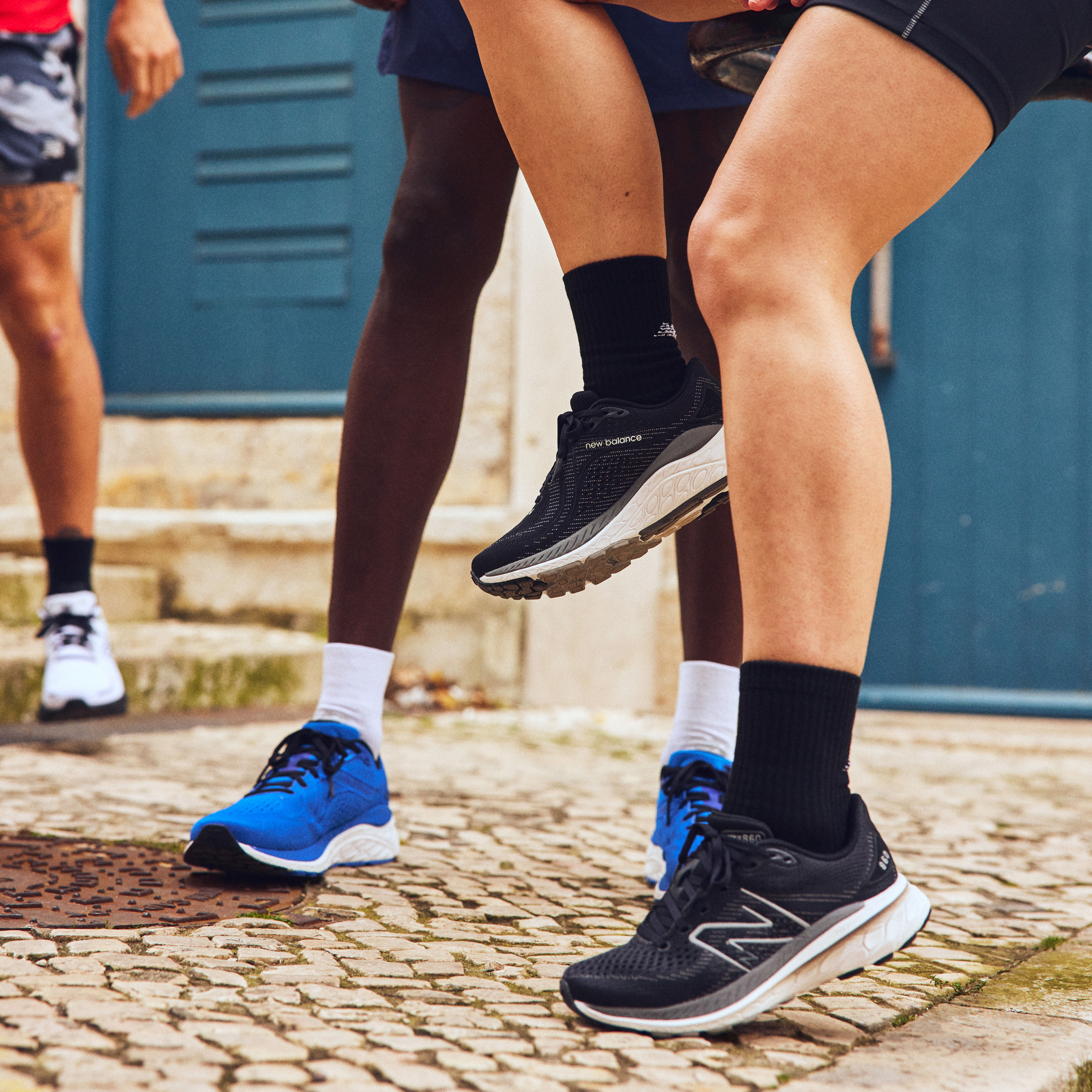
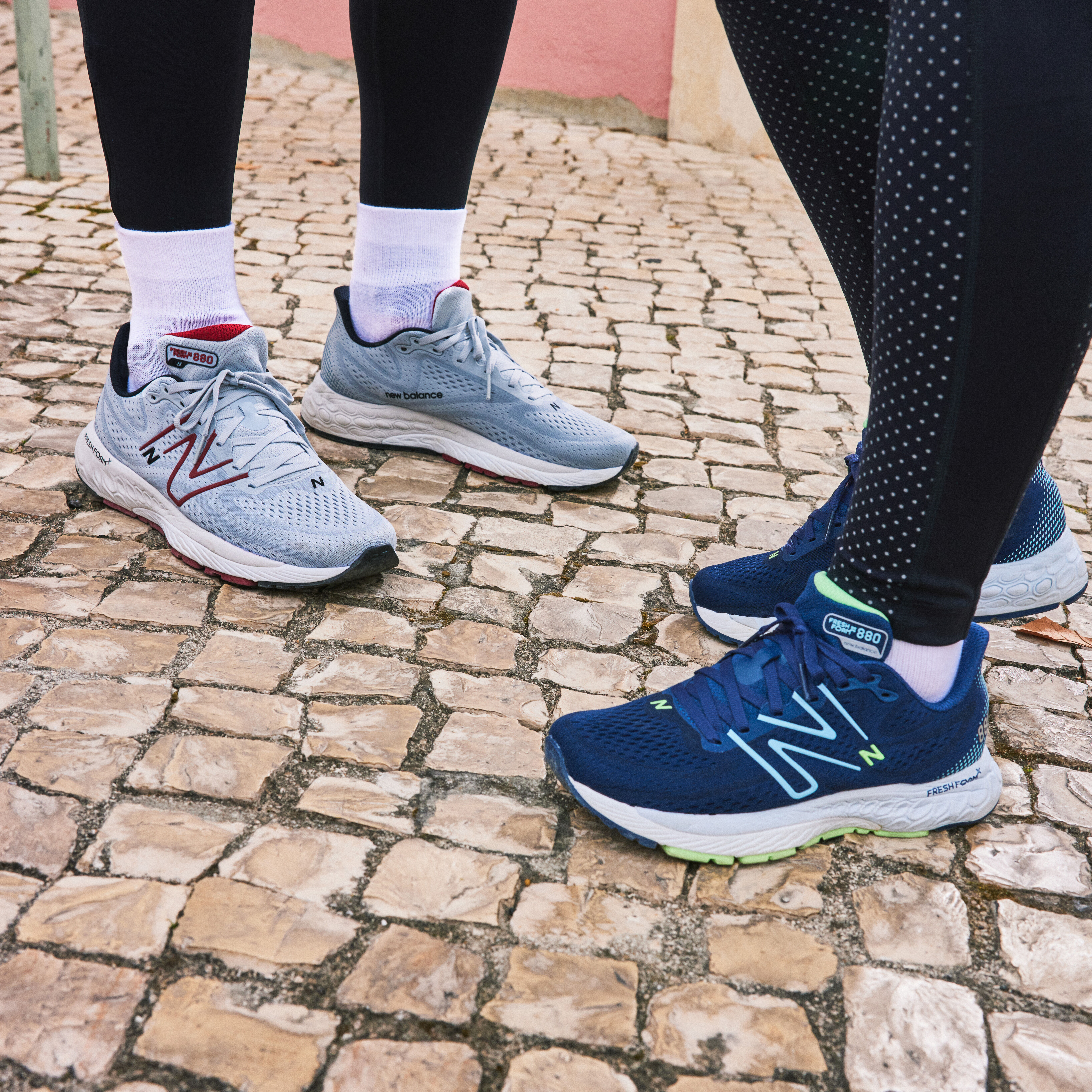
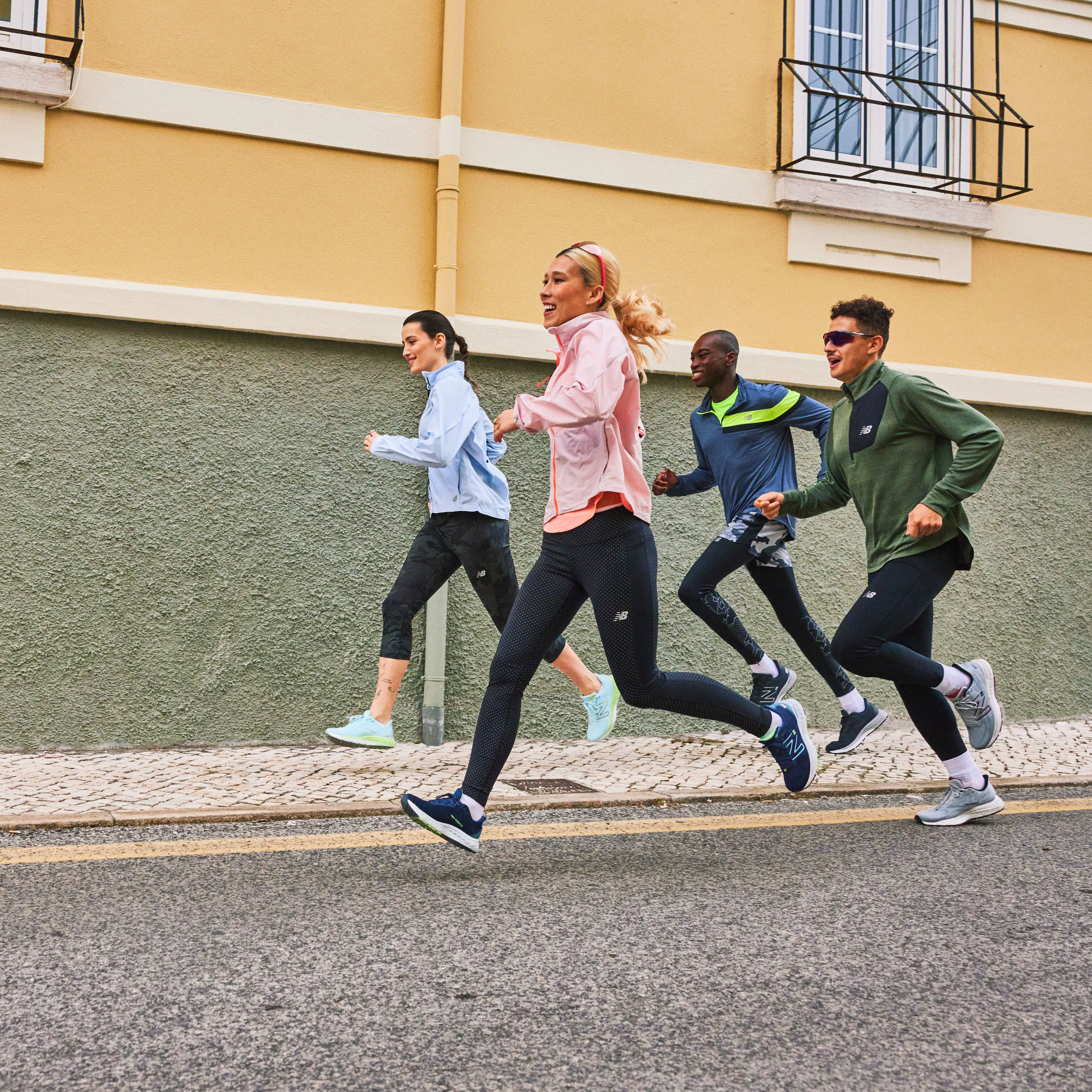
How do I tell if I underpronate?
If you think you might be an underpronator and want to find out before you pick out your next pair of running shoes, there are a few ways you can find out:
Check your running shoes for supination signs
Looking at how an old pair of running shoes have worn down is a good indicator of how you pronate. For overpronators, you’d expect the wear pattern to show the most wear on the outside edge of the sole. You can also look at how the shoes sit on a flat surface - overpronators should see a slight outward tilt.
Check your wet footprints
The wet foot test will tell you what shape of arches your feet have. Those with high arches tend to underpronate but it’s not a guarantee, there are also flat-
footers who underpronate.
The test is simple, just wet your feet thoroughly and step onto a flat surface that will show your footprints - concrete, cardboard, or a brown paper bag are good options. If you have high arches, your footprint won’t show much of the middle section of your foot, often just the outside edge.
Gait analysis
If you’d like professional advice, you can get your gait analysed. This usually involves being recorded while running on a treadmill in a pair of neutral shoes. An expert will then look at the video to determine how much you pronate. If you underpronate, you’ll usually get the opportunity to redo the test in a pair of running shoes for underpronation to see if they help your gait.
How to fix underpronation?
As we’ve discussed, underpronation isn’t necessarily a problem that needs to be fixed, it all depends on your individual feet. If you’ve been wearing neutral running shoes without pain or discomfort, there’s no reason you have to switch it up. However, if you experience any pain or injuries related to your feet, there are things that you can do to help:
• Strength training for glutes and hips - exercises such as glute bridges, lunges, and hip extensions can improve overall stability.
• Strength and mobility for feet and ankles - exercises such as calf raises, toe raises, and ankle circles will help to loosen and strengthen the joints and muscles.
• Stretching - underpronators tend to have tight Achilles tendons and calf muscles, so make sure to stretch them out, along with your hamstrings and feet.
• Work on your form - bad form can cause supination or exacerbate any resulting problems.
• Wear underpronation insoles - custom-made insoles - known as orthotics - can help to support your arch and control motion throughout the foot.
You can, of course, also wear running shoes for underpronation.
What type of running shoe do I need for underpronation?
There isn’t actually a separate category of running shoes for supination, but there are certain things you should look for in a neutral shoe that will make them better for your feet:
• Cushioning - underpronation compromises your foot’s natural shock absorption so look for extra cushioning - particularly in the midsole and heel.
• Support - avoid anything too flexible or soft, look for good ankle and heel support, as well as gentle arch support.
And it might be obvious, but avoid stability shoes for overpronation. They’re rigid on the inner side and often include features to prevent the foot from rolling in, so will worsen supination.
The Fresh Foam X 1080v12 for women / Fresh Foam X 1080v12 for men is our best underpronation running shoe. With underfoot cushioning and flex zones informed by pressure mapping data, and a supportive, second-skin style Hypoknit upper, this shoe is perfect for a quick 5K or longer training runs. And it comes in wide and extra-wide fittings, making it our best running shoe for underpronators with wide feet too.
Underpronation won’t always cause problems for a runner, but when it does, the best trainers for supination will keep you running. Check out our New Balance shoes for underpronation, and while you’re there, why not pick up some new running clothing? Having a great running kit can not only give you a mental boost, but it can help you get the most out of running.

